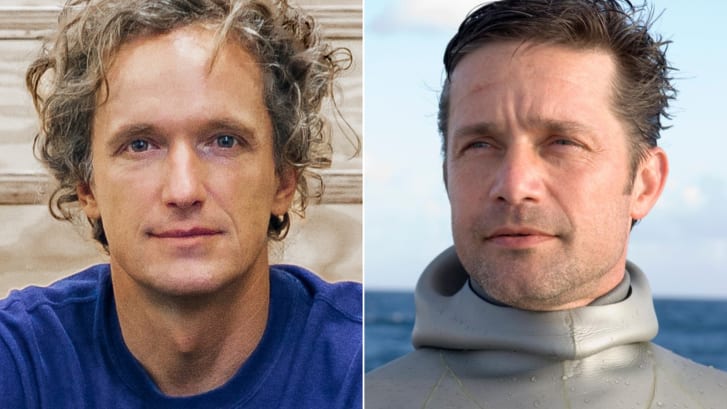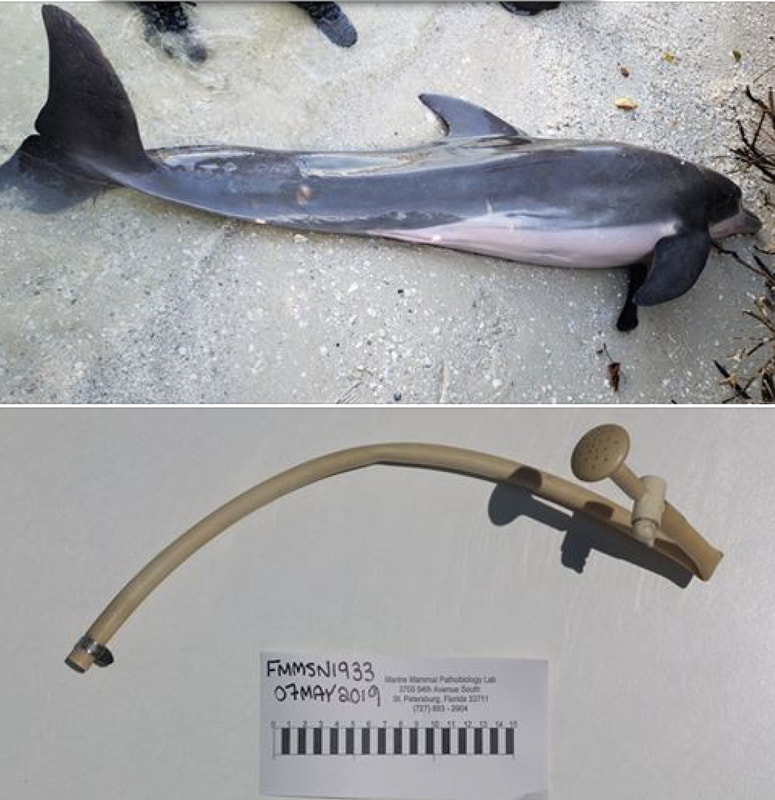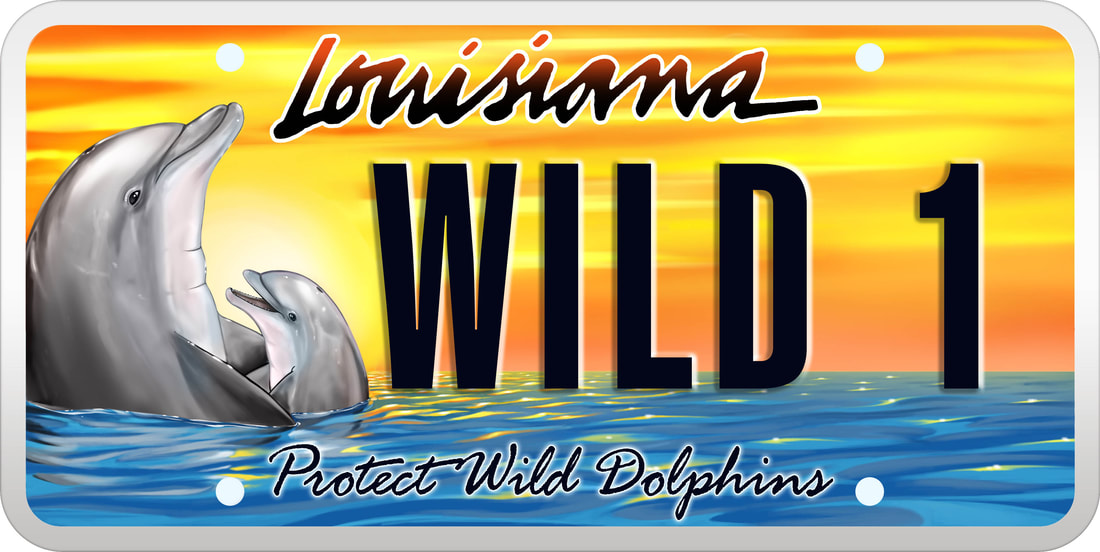 Sixty feet beneath the surface of the Caribbean Sea, aquanaut Fabien Cousteau and industrial designer Yves Béhar are envisioning the world's largest underwater research station and habitat. The pair have unveiled Fabien Cousteau's Proteus, a 4,000-square-foot modular lab that will sit under the water off the coast of Curaçao, providing a home to scientists and researchers from across the world studying the ocean -- from the effects of climate change and new marine life to medicinal breakthroughs. Designed as a two-story circular structure grounded to the ocean floor on stilts, Proteus' protruding pods contain laboratories, personal quarters, medical bays and a moon pool where divers can access the ocean floor. Powered by wind and solar energy, and ocean thermal energy conversion, the structure will also feature the first underwater greenhouse for growing food, as well as a video production facility. The Proteus is intended to be the underwater version of the International Space Station (ISS), where government agencies, scientists, and the private sector can collaborate in the spirit of collective knowledge, irrespective of borders.  Industrial designer Yves Béhar (left) and Aquanaut Fabien Cousteau (right) Industrial designer Yves Béhar (left) and Aquanaut Fabien Cousteau (right) "Ocean exploration is 1,000 times more important than space exploration for -- selfishly -- our survival, for our trajectory into the future," Cousteau said over a video call, with Béhar. "It's our life support system. It is the very reason why we exist in the first place." The newly unveiled design is the latest step for this ambitious project. According to Cousteau, it will take three years until Proteus is installed, though the coronavirus pandemic has already delayed the project. Cousteau comes from a family of famous oceanographic explorers. He's the son of filmmaker Jean-Michel Cousteau and grandson of Aqua-Lung co-creator Jacques-Yves Cousteau. The project is a joint effort between the Fabien Cousteau Ocean Learning Center (FCOLC) and Béhar's design firm Fuseproject, as well as their partners, which include Northeastern University, Rutgers University and the Caribbean Research and Management of Biodiversity Foundation. While the project currently has some backing from the private sector, it is currently seeking further funding. Beyond backers, the station's wet and dry labs can be leased to government agencies, corporations and academic institutions. Part of the plan is to offer regular visibility about what is happening on Proteus, including live streams and VR/AR content. In this way Cousteau hopes to engage a wider audience. “Imagine if you found something amazing -- whether it be microcosmic like a pharmaceutical, or macrocosmic like the next greatest animal -- if you could show it to classrooms and universities," he said. "Our mission is to be able to translate complex science into something that the average person not only maybe will understand, but fall in love with."
0 Comments
NOAA: 260 Dolphins Dead on Gulf Coast, Triple Usual Number - Michael Towner, Iconic Legacy6/14/2019 Authorities say more than 260 dolphins have stranded across the U.S. Gulf Coast since Feb. 1, triple the usual number.
National Oceanic and Atmospheric Administration scientists say it's too early to know the cause but they're investigating whether salinity changes from high rivers and a Louisiana spillway opening contributed to the deaths. NOAA says on its website that a number of the dolphins stranded from Louisiana to the Florida Panhandle had open sores consistent with freshwater exposure, but such sores are "not uncommon" in the spring. A Mississippi scientist says the spillway opening is at least partly to blame for 126 deaths across Mississippi's coastline, calling it worse than the BP oil spill in 2010, when 91 dead dolphins were found in Mississippi during the entire year.  Florida officials discovered a two-foot plastic shower hose in the stomach of a seven-foot-long dead male dolphin that washed ashore earlier this month, CNN reports. The Florida Fish and Wildlife Commission announced on May 17 that the dolphin was found at Fort Meyers Beach a week before. Biologists performed an autopsy, which revealed the hose and other plastic parts in the dolphin's stomach and esophagus. "Your actions can make a difference - secure and properly dispose of trash, take part in coastal cleanups and share information on how to reduce marine debris with others," the agency wrote in a Facebook post. The dolphin is the second stranded one that officials have found at the beach in a month. A months-old dolphin was found on April 23 with a piece of balloon and two plastic bags in its stomach. Biologists determined that it was in poor health and decided to "humanely euthanize" it. "This finding highlights the need to reduce single use plastic and to not release balloons into the environment," the commission said at the time. More than 700 species of marine animals come across litter, much of which is plastic, according to the University of Plymouth. An estimated 12 million tons of plastic waste enter the ocean every year, the institution further notes. Several states have made an effort to limit the use of plastic in response. In 2015, Hawaii became the first to ban plastic bags in all of its counties. California and New York have since followed suit with similar legislation. For more info, click here  Charleston, South Carolina – November 3, 2018 – As part of a move to small ‘decal’ size images for license plates in South Carolina, the ‘Protect Wild Dolphins’ license plate, designed by marine artist Steve Diossy, will be replaced in the new year. South Carolina DMV and Michael D Towner, CEO of Iconic Legacy, have begun the process of redesigning and approval for the reduced decal design and it should be completed and replace the original design in January, 2019. Michael D Towner was responsible for the development of the program, along with the Protect Wild Dolphins license plate program in Louisiana. In Lousiana the full color plates are produced at the state prison, and by a machine invented in the early 1900s at Angola, a maximum-security prison farm in Louisiana operated by the Louisiana Department of Public Safety & Corrections. It is named "Angola" after the former slave plantation that occupied the territory. Louisiana is continuing the use of full color designed plates. Georgia reverted back to full color designs from the decal design, after a significant decrease in specialty license plate sales due to an increase in registration fees. Other states are looking to change the colorful specialty plate designs to a decal design, including Florida, where there are 123 specialty license plates. The DMV routinely cites uniformity and law enforcement as principal reasons for this move, but there is conflicting evidence on whether the distinctively designed full color plates actually help rather than hinder law enforcement in identifying would-be offenders’ vehicles. The funds from the Protect Wild Dolphins license plate in South Carolina currently go to EarthEcho International, headed by Phillippe Cousteau Jr, the son of Jan and Philippe Cousteau Sr., and the grandson of Captain Jacques-Yves Cousteau, the iconic oceanographer. Philippe was born in Santa Monica, California and grew up between France and the United States, attending college in St Andrews, Scotland. He and his wife Ashlan are the stars of The Travel Channel’s newest series Caribbean Pirate Treasure. EarthEcho International is a nonprofit organization founded on the belief that youth have the power to change our planet. “South Carolina has a strong marine heritage and a dynamic and beautiful environment.” Philippe states, “This funding enables us to work with strong local partners to enhance ocean and marine mammal education and conservation throughout the state and encourage its citizens to continue to be active stewards of the environment.” Towner says that he hopes the design change will not adversely affect the program and is awaiting information from South Carolina DMV on statistics showing any changes to sales for license plates that have already undergone the switch from full color to the decal format. Unfortunately, it may take at least six years to evaluate the effects due to the two-year renewal process and the ability to keep the existing license plate until the mandatory ten-year plate replacement. Michael Towner says that the new design will be a combination of the original full color design and the slogan ‘Protect Wild Dolphins’ and the draft will be available for viewing and comments in December on the website: ProtectSouthCarolinaDolphins.com.  New SC decal design New SC decal design The fee from the purchase of the license plate is $60.00 every two years in addition to the regular motor vehicle registration fee, a portion of the fees collected has been specifically earmarked to assist local organizations and agencies who have the required credentials, licenses and permits to collect, analyze and archive scientific data regarding the dolphin population in South Carolina waters. Towner advises that the primary component of the South Carolina ‘Protect Wild Dolphins’ program is the development of educational content, support of scientific research, and development and implementation of innovative conservation initiatives. Funding is used by EarthEcho International for specific education and conservation programs, directed at strengthening and supporting existing regional efforts to protect the environment, wild dolphins, and their coastal habitats and for scientific research conducted through collaborative efforts. Learn more at www.ProtectSouthCarolinaDolphins.com |
BLOGArchives
January 2025
Categories
All
|
